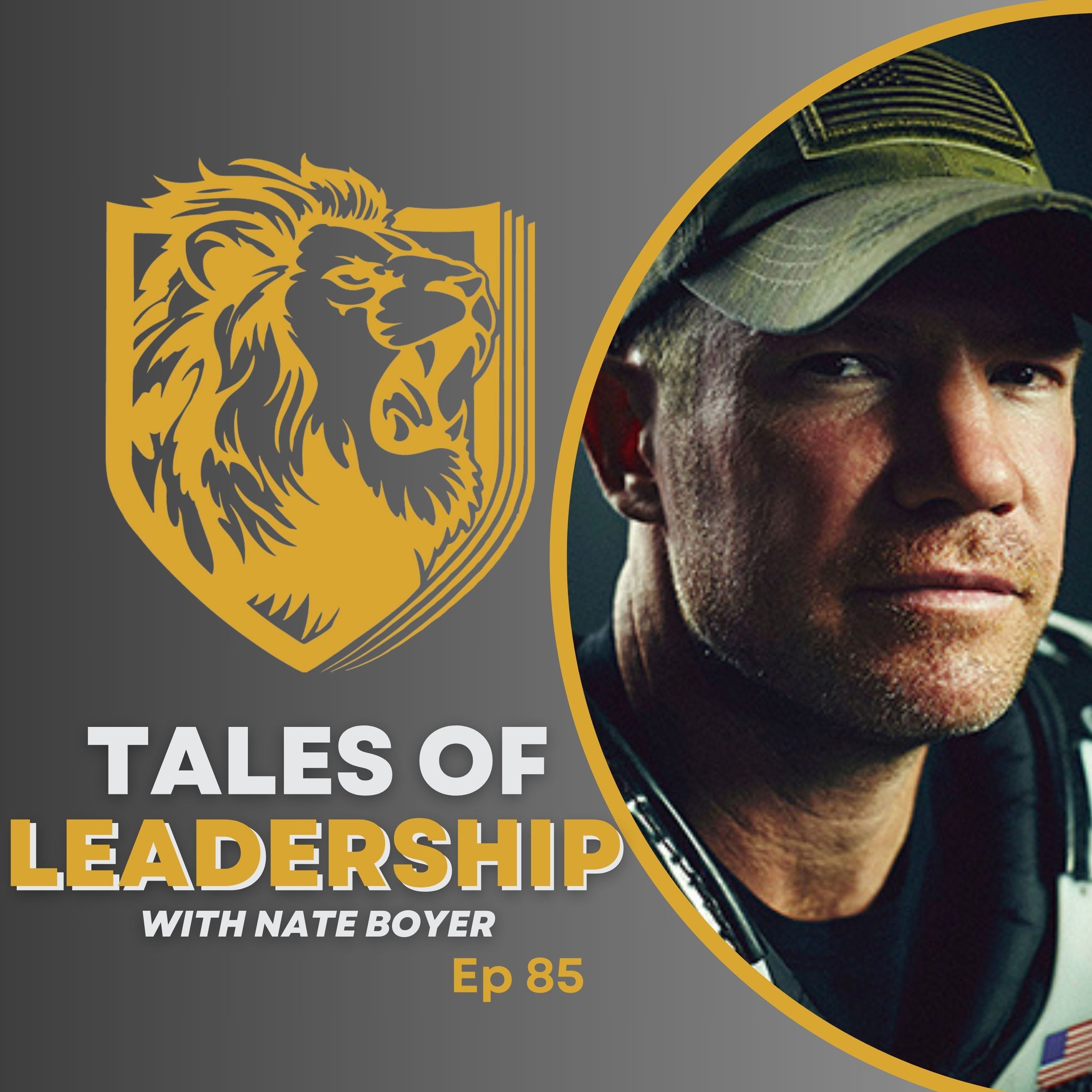Article 03: Defining A PAL Part 1
In the previous blog, I defined what leadership means to me. This month's blog will dive into my vision for building a Purposeful Accountable Leader (PAL). I will frequently use the term PAL, and it is essential to spend some time to clearly defining this term. However, this month's blog will be broken into separate parts, given the size. The first part will cover the first 11 examples of a PAL. In a second blog released on 15 July, the final 11 examples are provided to help deepen your understanding of a PAL. Below are the first 11 examples:
Lead With Purpose
PALs are leaders who are intentional and act with purpose. You have to be offensive-minded, not defensive-minded, to be a PAL. A leader will fail, which is okay, but you must be ready to pick yourself up and move forward. You will never get ahead by consistently making decisions based on a 50-meter target. You must break the cycle and become proactive by nature. I like to think of it as disrupting the enemy's decision-making process. Great leaders can make confident and decisive decisions because the team has clearly weighted the benefits and rewards. To lead with purpose means to make decisions on purpose.
2012- Southern Afghanistan
The picture was taken during my first official mission as a rifle platoon leader. The moment I took the title, I wanted to lead with purpose. The platoon had suffered some devastating chain of events, and I was determined to change course.
Routine Accountability Discipline (RAD)
PALs establish healthy routines, have accountability systems to keep them on track and follow through with discipline. Routines are essential to every organization because they create a level of predictability. By having predictable events, you have blocked out time to solve most problems when they arise. Most importantly, you have weaponized your time, creating more time for your team to think. Second, PALs have accountabiltiy systems, processes, or people around them that act as their tree. A tree is a deep-rooted person or idea that is unmovable in tough times and provides shade when needed. Third, PALs are disciplined and have the intestinal fortitude and willpower to stay the course. If you are traveling for work, do you cancel a meeting? If so, you signal that the meeting is not essential to your organization. It's hard to do what is right, especially when it's not convenient. PALs protect their time and the team's time by choosing not to take shortcuts.
Set The Standard
PALs are accountable and hold other people to the standard set within the formation. Leaders must develop a system to keep themselves accountable first before holding others to the same standard. A way to remain responsible is through small accountability circles of peers you know, like, and respect. No matter how much willpower you have, everyone sometimes needs a tree to lean on. Accountabiltiy circles act as a leader's tree. You have to strike a fine line between holding people accountable and punishing them as leaders. Each formation has a standard, and no one is above it, including you! On the same note, it's okay to fail. However, you need to fail small and fail fast so you can quickly recover and continue moving forward.
Constructive Candor
PALs create a culture where constructive candor is welcomed. If you want a problem-solving organization, you must encourage constructive candor to elicit feedback, or there will never be any improvement. The best way to do this is to ask powerful questions and create a coaching culture. As the leader, you need to ensure the organization is consistently improving. You do that by deliberating, asking powerful questions, and protecting time to think as a group.
Accept The Whole Person
PALs accept the whole person, not just the work version. What does this mean? Leadership is messy, and leading people is rewarding and challenging at the same time. You are not the leader of the team member at work; you are their leader in all areas of life. The enemy will get a vote, and you must be there to help your team when they do. Life will not always go according to plan, and a PAL understands that fact while accepting each member's good, bad, and ugly. Lead the whole person!
2017- Fort Polk, Louisiana
The picture was taken at the 2-2 Infantry Halloween Trunk or Treat. This photo clearly conveys what it meets to accept the whole person. Your team members are not just employees; you must embrace the whole person and more importantly, their families.
Disciplined Disobedience
PALs are bold and not afraid to be unreasonable in their actions. There is a delicate balance a leader must walk when fighting against the organization or higher intent when they know it's wrong. Still, there are fights only the leader can wage. You must understand the battles to be fought while allowing your core values and character to guide your actions. A good practice for leaders to be bold is directly challenging outside the public eye. A leader will gain more respect for their team if they fight in a public space, but you are also eroding your reputation. PALs understand the battles they need to fight and do so privately by directly challenging with humility.
Add Value
PALs add value to leaders in their organizations. The rule of compounding says that leaders who add value to other leaders in their formation will multiply value throughout their organization. However, you need to be selective about whom you add value to. A cold fact of leadership is that you only have 24 hours a day, and all organizations have team members who are weak links in the chain. A good rule of thumb is to follow the Pareto Principle, meaning that 20% of the leaders in your organization will create 80% of the growth. As a PAL, you must identify the top 20% of future leaders and then pour your wisdom into them.
Mental Clarity
PALs refuse to lead in mental fogs and remain decisive with clear decisions. As a leader, you must be proficient in your chosen field. Still, more importantly, you need to leverage the collective wisdom of your team. You are not the most intelligent person on the team, nor will you have all the answers. If you believe you possess all the answers, you allow your ego to lead and create a bottleneck within your formation. Once you realize that fact, the more decisive you will become. Lean on your experts, gather the information, then make a confident decision. PALs make decisive decisions and never look back.
Mission Command
PALs operate with mission command. What is mission command? According to the Army ADP 6-0, "Mission command is the exercise of authority and direction by the commander using mission orders to enable disciplined initiative within the commander's intent to empower agile and adaptive leaders in the conduct of unified land operations." Leaders push down, carry sideways, and pull from higher critical information to allow disciplined initiative. Why is the American military the premier fighting force in the world? Because we empower our junior leaders to make crucial decisions at inflection points. PALs avoid being the bottleneck in their organization and allow their team to make decisions operating within the boundary of the leader's intent.
Mission Command
PAL must create an environment where proficient team members can quickly weigh decisions and take action to meet the mission while mitigating risk.
Visionaries
PALs are visionaries. Being a visionary is a two-step process. First, PALs start with looking into the future and identifying the smoke before the fire. A critical aspect of leadership is forecasting issues before they cause the organization to lose traction. An essential process of being a visionary is creating a Big, Bold Vision (BBV) for your organization to work towards. Second, leaders take people on a journey, and you do that by inspiring others to focus on their strengths. To help create the journey, think of it as building a bridge. The bridge is the path with clear left and right limits to keep your team focused and accountable. It also has a clear start and endpoint to achieve the vision successfully. PALs take people on a journey and identify future issues before they can derail the organization.
Aerial Perspective
PALs operate from an aerial perspective. There's a reason why commanders always fight to hold the high ground. First, it is the most advantageous terrain to possess. Second, it allows you to see the whole battlefield. Leaders that operate from an aerial perspective pull themselves out from the tactical decisions and focus on strategic-level decisions. To become an effective leader, you must lead with an aerial leadership style and not be pulled into every battle. You're focused on the big picture!
Final Thoughts
Part 1 of defining a PAL provided 11 examples of how transformational leaders act. To be a great leader always starts with you and how you decide to show up. Are you showing up on purpose, or are you going through the motions? Adopting an aerial perspective is the most impactful lesson I learned through my leadership journey. If you can learn to see the big picture and focus on strategic level decisions, it will cause your team to focus on the tactical level decisions. A side effect is forced mission command, an environment of constructive candor, and mental clarity.
To become a Purposeful Accountable Leader, you must confidently know who you are and what drives you to effect change.
-Joshua K. McMillion
I want to hear from you! What lessons did you learn about yourself? Share in the comments below, or feel free to send me a personal message. Remember, leaders, need to set an example for others to follow. Use the 11 examples in Part 1 of defining a PAL to begin inspiring others. In the next blog, we will get straight to the point and cover the last 11 examples of a PAL. We all have greatness inside, but it's up to us to forge those abilities. Become the leader your team needs!
After Action Review
How are you showing up?
How do you share information with your team?
When was the last time you added value to your team members?
My Mission: I will end toxic leadership practices by equipping leaders with transformational leadership skills.
Together, we will impact 1 MILLION lives!!!
Every day is a gift, don't waste yours!
Joshua K. McMillion | Founder MLC | Founder MLC

































Episode 85 with Retired Major General Keith Thurgood & Retired Lieutenant General L. Neil Thurgood